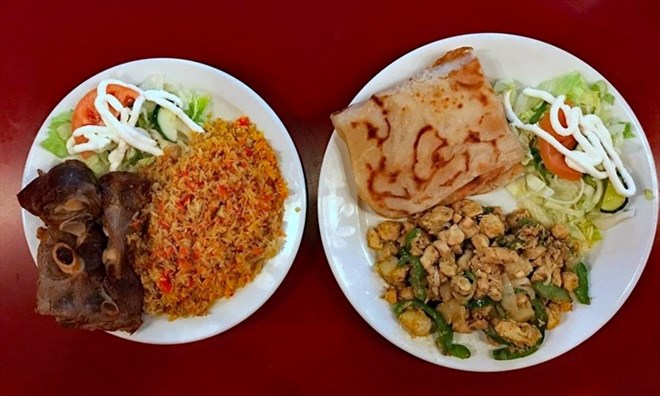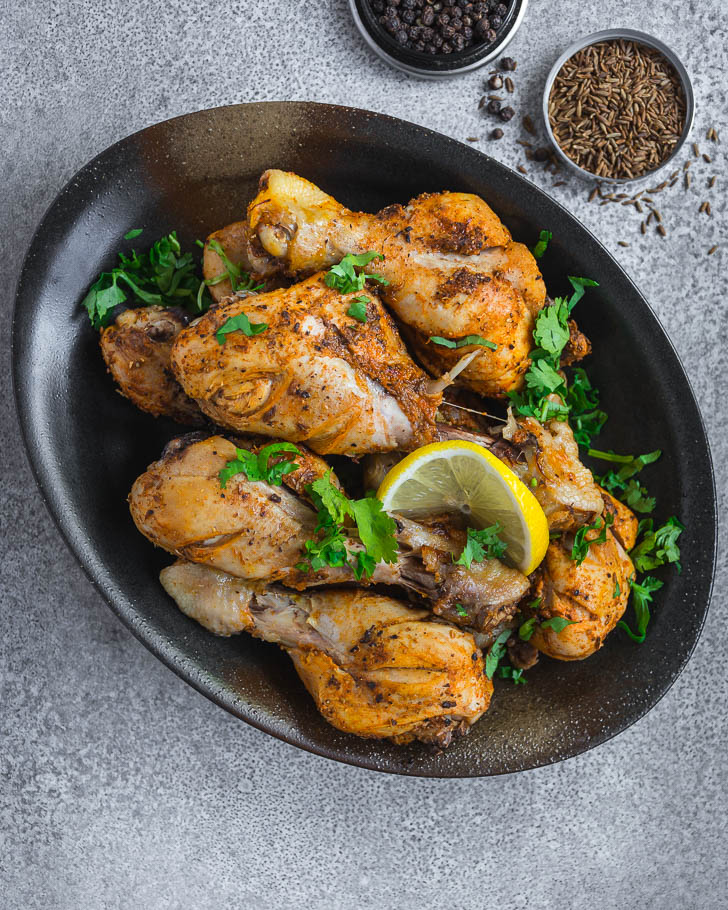Somali Food Revealed: Indulge in Genuine Flavors and Ageless Dishes
Wiki Article
Savoring the Distinct Tastes and Flavors of Somali Gastronomy: a Trip With the Land of Spices and Saffron

Aromatic Flavors and Saffron
Somali cuisine is recognized for its vibrant and tasty meals, which are accomplished with the competent usage of fragrant flavors (Somali food). These aromatic seasonings are made use of in both contemporary and conventional Somali dishes, creating a distinct and extraordinary flavor account.One of the most treasured flavors in Somali cuisine is saffron. Known for its vibrant color and distinct scent, saffron is commonly used to boost and boost the flavors of Somali recipes. Whether it's sprayed on rice pilaf, instilled in warm tea, or used in curries and stews, saffron includes a touch of deluxe to Somali gastronomy.
Along with their culinary importance, these fragrant spices and saffron additionally hold social relevance in Somali cuisine. They are made use of in traditional events and celebrations, signifying warmth, hospitality, and the splendor of Somali society.
Traditional Somali Meals
Check out the delicious variety of conventional Somali meals that will deliver you to a globe of bold tastes and social splendor. Somali cuisine is a fascinating combination of African, Middle Eastern, and Indian influences, resulting in a special culinary experience. Get started on a culinary journey and enjoy the abundant and varied flavors of conventional Somali meals.Impacts From Arab and Indian Food
Immerse on your own in the vibrant flavors of Somali gastronomy as you uncover the rich influences from Arab and Indian cuisine. Somali food has actually been formed by centuries of profession and social exchange with Arab and Indian merchants. These influences can be seen in the varied seasonings, tastes, and cooking methods utilized in Somali dishes.Arab cuisine has had a considerable effect on Somali gastronomy. Somali dishes commonly feature ingredients such as cardamom, cinnamon, cloves, and saffron that are typically used in Arab food preparation. The usage of these flavors adds deepness and intricacy to Somali dishes, producing a distinct taste account.
Somali dishes often integrate spices such as turmeric, coriander, and cumin, which are frequently used in Indian cooking. These spices not only include taste but also give Somali dishes their lively shades.
In enhancement to spices, Arab and Indian culinary strategies have actually also influenced Somali food preparation. The idea of slow-moving food preparation or marinading meat in spices prior to grilling, understood as "maraq," is thought to have actually originated from Arab cuisine. Similarly, the use of flatbreads, like "canjeero," which resembles Indian dosa, can be traced back to Indian culinary traditions.
The impacts from Arab and Indian cuisine have added deepness and complexity to Somali gastronomy. These influences have not just formed the ingredients and tastes used in Somali dishes yet have actually also contributed to the social identification of Somali food. So, as you begin on your culinary journey through Somali gastronomy, be prepared to savor the unique preferences and tastes that have actually been affected by Arab and Indian cuisine.

Checking Out Regional Flavors
As you delve right into the varied culinary landscape of Somali gastronomy, a wide variety of local flavors awaits your taste buds. Each area in Somalia boasts its very own unique components, food preparation techniques, and flavor combinations that include depth and variety to the nation's food.In the north area of Somalia, you will find tastes affected by the nomadic way of living and closeness to the Gulf of Aden. Here, camel meat takes spotlight, prepared in a range of methods, consisting of marination in a range of spices and slow-cooking. Using dried fruits, such as figs and days, improves the splendor of recipes, while the coastal impact brings a wealth of fish and shellfish to the table.
In the main area, the food is characterized by hearty dishes that reflect the agricultural heritage of the area. Millet and sorghum are essential grains, made use of to make breads like injera and canjeero. Stews made with goat meat, veggies, and fragrant flavors like cumin and coriander are typical and give a ruptured of tastes.
Moving towards the southern area, you will certainly run into a blend of flavors affected by the Bantu individuals and the Indian Ocean trade routes. Coconut milk, tropical fruits, and great smelling spices like cardamom and cloves are made use of freely in meals, creating a unique and dynamic taste profile.
Checking out regional tastes in Somali gastronomy allows you to experience the varied cultural influences that have actually shaped the nation's food. From the nomadic flavors of the north to click here for more the agricultural heartiness of the main area and the coastal blend of the south, each bite narrates of practice, heritage, and the dynamic tapestry of Somali gastronomy.
Exquisite Desserts and Beverages
Indulge in the alluring tastes of Somali gastronomy via a fascinating variety of treats and beverages that showcase the rich social heritage of the country. Somali treats are a real joy for the senses, offering a perfect mix of sweetness and exotic flavors. One preferred dessert is Kac Kac, a deep-fried pastry made with cardamom, flour, and sugar.When it involves beverages, Somali food supplies a rejuvenating selection of drinks that enhance the flavors of the treats. A must-try is Shaah, a typical spiced tea made with black tea leaves, cardamom, cloves, and cinnamon. The fragrant mix of flavors develops a soothing and warm drink that is commonly delighted in with a side of days or biscuits. For a much more cooling option, Somali individuals delight in Qaxwo, a revitalizing yogurt-based drink flavored with fruits such as banana, mango, or strawberry. Find Out More Its luscious and zesty preference offers a best equilibrium to the sweet taste of the desserts (Somali food).
Verdict
So following time you're in the mood to explore new flavors and seasonings, make certain to include Somali gastronomy to your listing. From the aromatic spices and saffron to the traditional recipes affected by Arab and Indian cuisines, there is something tasty and distinct for every person to relish. Do not neglect to try the beautiful desserts and drinks that will undoubtedly leave you desiring extra. Start a culinary journey through the land of spices and saffron, and allow your taste buds be delighted.From aromatic flavors to traditional meals affected by Arab and Indian cuisine, Somali gastronomy is a wonderful combination of tastes. These impacts can be seen in recommended you read the varied seasonings, flavors, and cooking methods used in Somali meals.

These seasonings not just include taste yet additionally offer Somali dishes their dynamic colors (Somali food). These influences have not just formed the active ingredients and flavors utilized in Somali dishes but have actually additionally added to the social identity of Somali cuisine
Report this wiki page